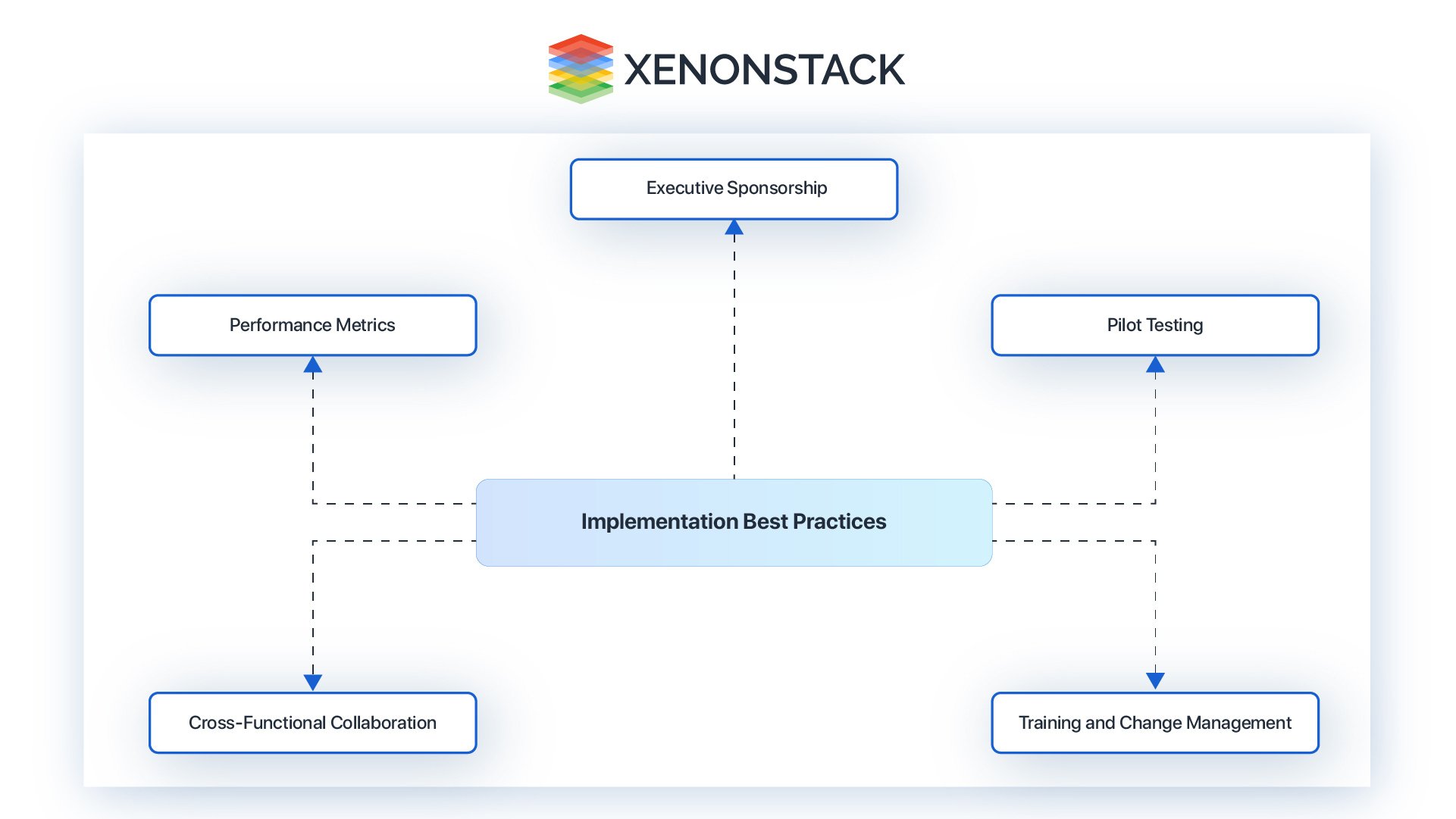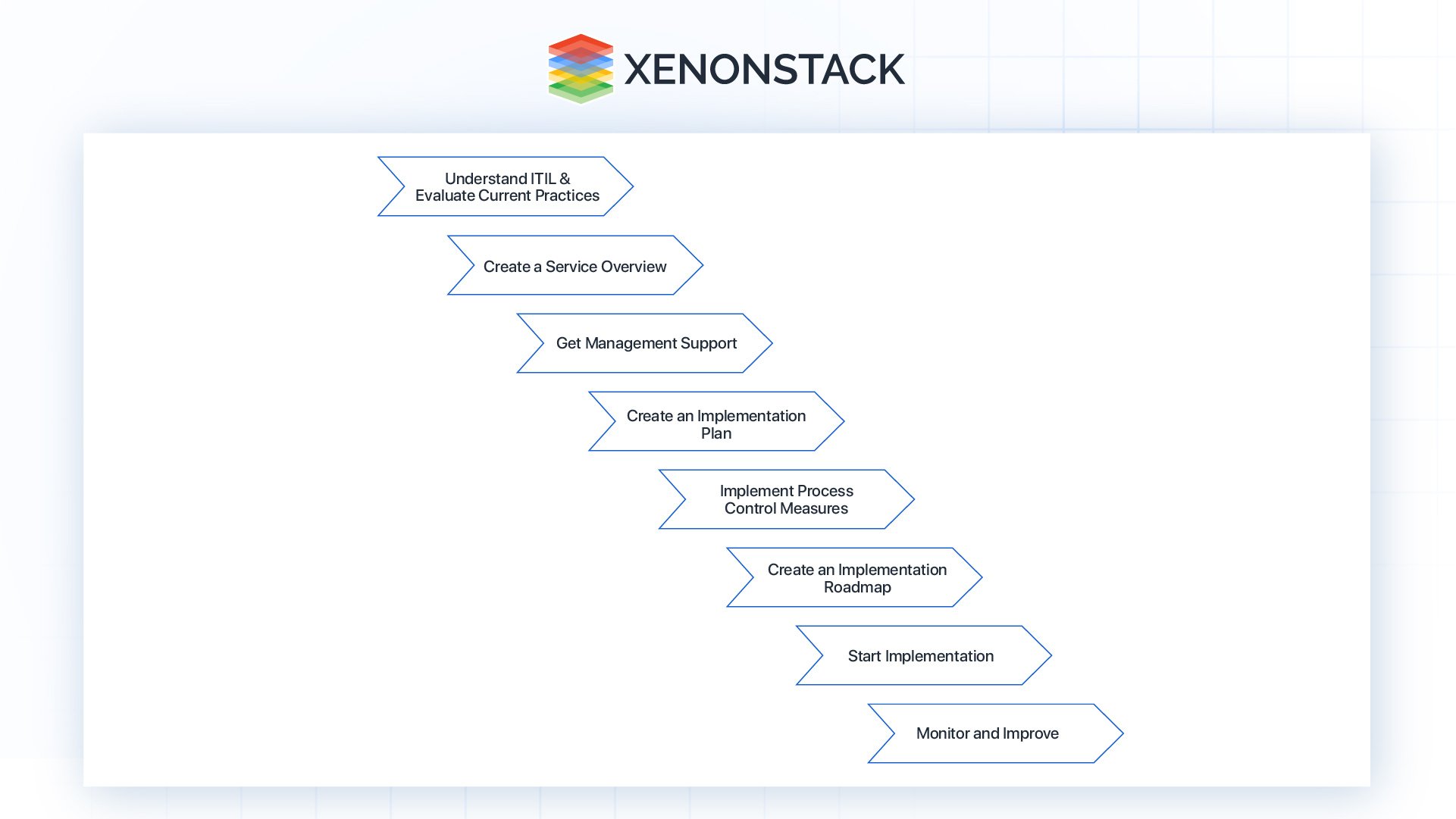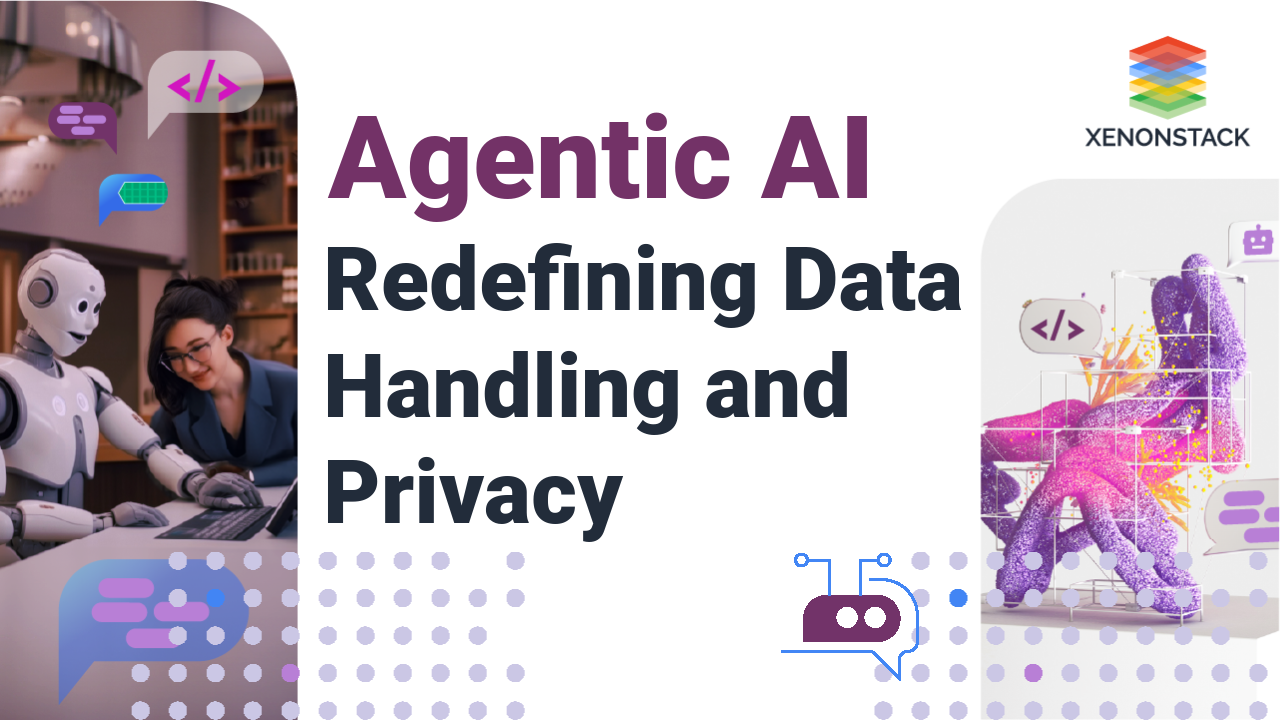
Step 6: Implement Process Control Measures
- Establish Metrics: Define key performance indicators (KPIs) to measure process performance and effectiveness.
- Monitor and Report: Implement controls to monitor compliance with ITIL processes and regularly report on performance against established metrics.
Step 7: Create an Implementation Roadmap
-
Outline Steps: Please create a detailed plan outlining the different phases, milestones, dependencies, and resources needed for successful implementation..
-
Ensure Alignment: Align the roadmap with organizational strategies and ITIL principles to guide implementation efforts cohesively.
Step 8: Start Implementation
-
Initiate Small-Scale Pilots: Begin implementing ITIL processes in controlled, manageable phases or pilot projects.
-
Gradual Expansion: Scale implementation gradually across different IT service areas while ensuring each phase is thoroughly tested and adjusted, as necessary.
Step 9: Monitor and Improve
-
Continuous Assessment: Regularly monitor progress and assess the impact of implemented ITIL processes.
-
Seek Feedback: Encourage feedback from stakeholders, including staff and customers, to identify areas for improvement and adjust implementation strategies accordingly.
Implementation Best Practices
For organizations looking to leverage Now Assist in alignment with ITIL best practices, several implementation best practices should be considered:

Figure: Flow Diagram of Implementation Best Practices
-
Executive Sponsorship: Secure buy-in from senior management to support the integration effort and allocate necessary resources.
-
Cross-Functional Collaboration: Foster collaboration between IT teams, AI experts, and business stakeholders to ensure alignment with organizational goals and ITIL processes.
-
Pilot Testing: Conduct pilot tests to evaluate Now Assist's performance in real-world scenarios and fine-tune integration with existing ITIL workflows.
-
Training and Change Management: Provide comprehensive training for IT staff and end-users on using Now Assist effectively. Implement change management practices to mitigate resistance to AI adoption and ensure smooth transition.
-
Performance Metrics: Define key performance indicators (KPIs) to measure the impact of Now Assist on ITIL-aligned processes, such as incident resolution times, user satisfaction scores, and compliance with Service Level Agreements (SLAs).
Real-World Applications
To illustrate the effectiveness of integrating Now Assist with ITIL, consider the following case studies:
- Company A: Implemented Now Assist to automate first-line support tasks, resulting in a 30% reduction in average incident resolution times. By aligning Now Assist's capabilities with ITIL incident management processes, Company A achieved higher service desk efficiency and improved user satisfaction scores.
- Company B: Integrated Now Assist with ITIL change management practices to streamline the approval process for IT changes. This integration enabled Company B to reduce change implementation errors by 25% and accelerate time-to-market for new IT services.
Future Trends and Considerations
Looking ahead, the synergy between Now Assist and ITIL is poised to drive further advancements in IT service management. Future trends may include:
- Advanced AI Capabilities: Continued advancements in AI Technologies, such as predictive analytics and sentiment analysis, will enhance Now Assist's ability to deliver proactive IT support aligned with ITIL's principles.
- Integration with DevOps: Closer integration between Now Assist, ITIL, and DevOps practices will promote seamless collaboration between development, operations, and support teams, fostering a culture of continuous delivery and improvement.
- Ethical AI: Addressing ethical considerations surrounding AI, such as data privacy and algorithmic bias, will be crucial to maintaining trust and compliance with regulatory frameworks.
Conclusion
In conclusion, the integration of Now Assist with ITIL represents a paradigm shift in IT Service Management, combining the efficiency of AI with the rigor of established best practices. By automating routine tasks, enhancing user experiences, and facilitating continuous improvement, Now Assist enables organizations to achieve operational excellence and stay ahead in today's competitive landscape. As AI continues to evolve, its constructive collaboration with ITIL will pave the way for innovative solutions that drive business success while meeting the evolving demands of modern IT environments.
- Discover here about IT Business Management with Now Assist
- Learn how to Strengthening Security Operations with Now Assist




